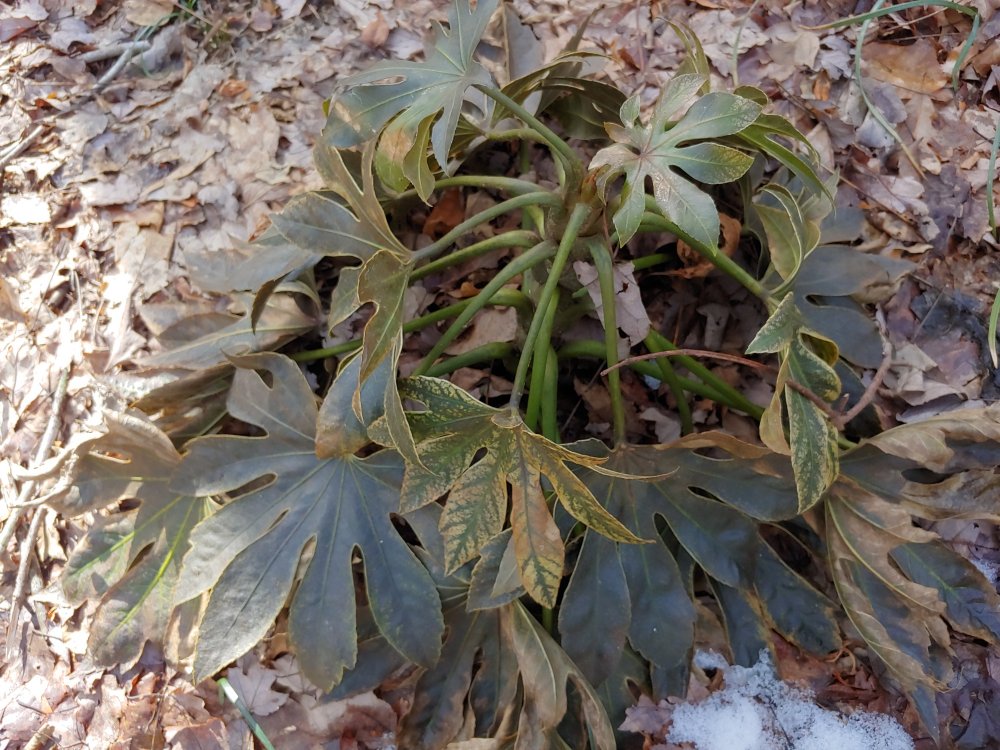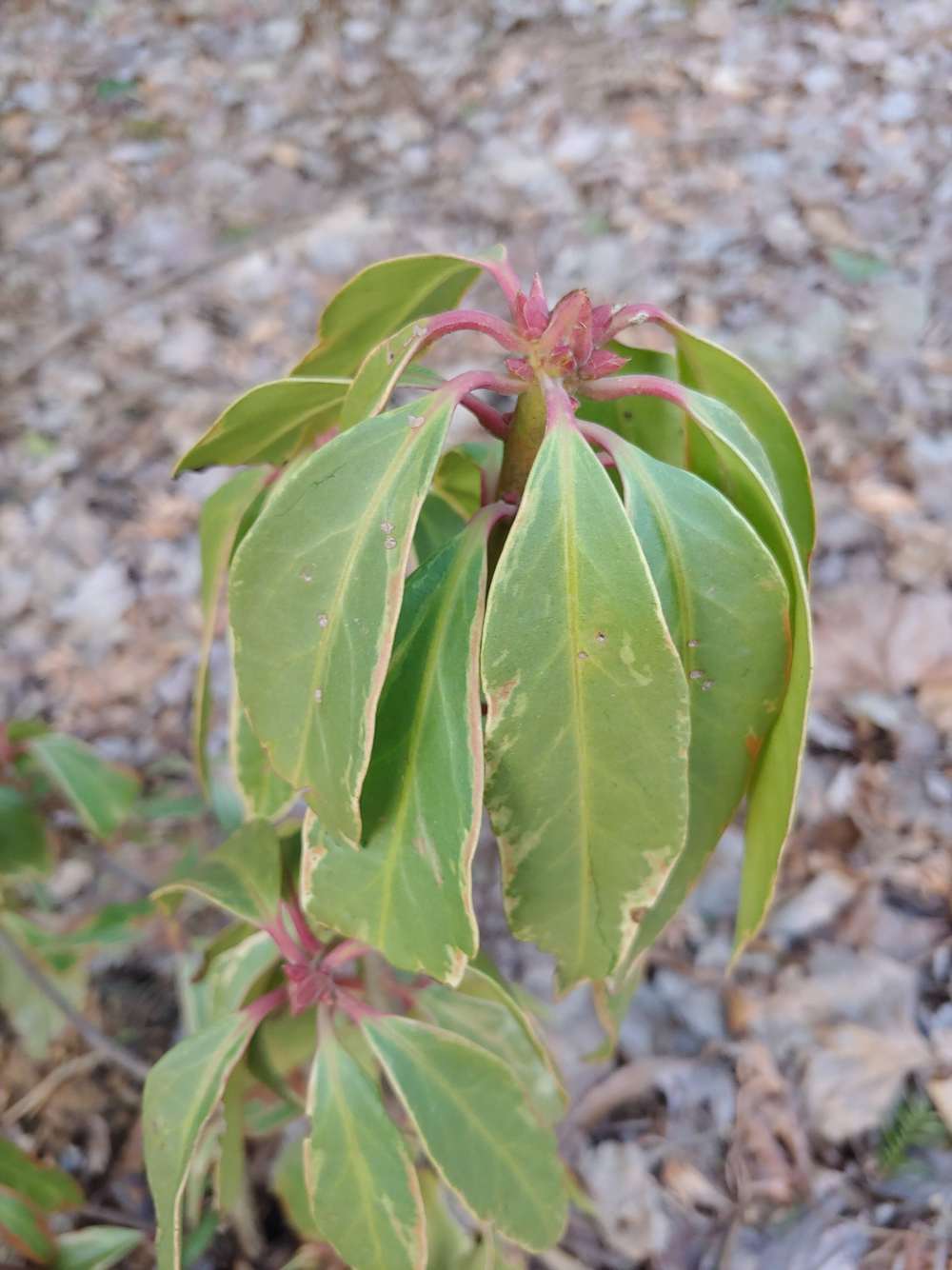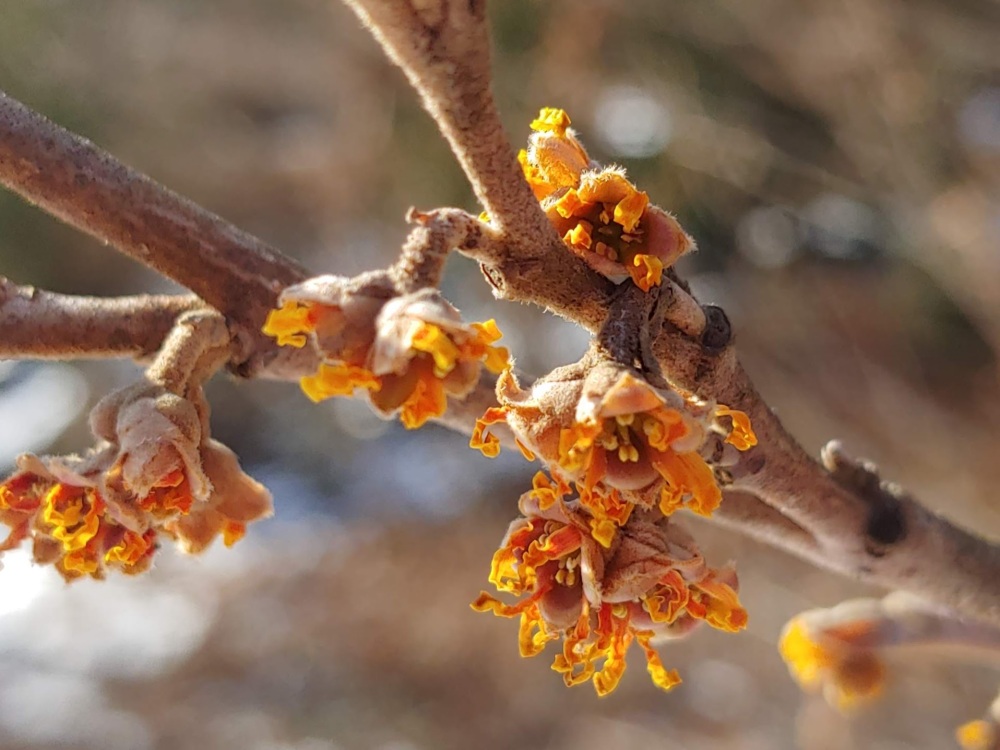The anticipation of an incoming few days of extreme cold, and the subsequent waiting to discover damage to the garden’s treasures is quite unpleasant, filled with imaginings of the worst that could happen. Previous experience, that injury is rarely as severe as feared, reassures somewhat that damage from a single night of two degrees below zero (Fahrenheit) is unlikely to be catastrophic. But, I’ve witnessed damage at two above, and little at several degrees below zero, so there is a troubling uncertainty.

In the day or two following the freeze, injury from the cold can be immediately evident, though often it does not begin to show until weeks later. On this fifty-six degree afternoon, a few days after the cold has gone, I am somewhat encouraged that two questionably cold hardy newcomers to the garden, variegated fatsia (Fatsia japonica ‘Spider’s Web’, above) and Florida anise shrub (Illicium floridanum ‘Pink Frost’. below), have survived, though somewhat for the worse after this short period of cold. Both shrubs were left unprotected, while other fatsias and anise shrubs were protected by cages filled with leaves to help determine the limits of their cold tolerance. I have not dumped leaves from the cages to examine others, which should be better off, and my hope is that if these survive two below they will not require attention in future years.

Aucubas, camellias, and daphniphyllum (below) that looked quite sad a day earlier, reacting to the cold by curling leaves, have returned to normal as expected. A few flower buds of paperbushes have blackened along the edges, but this is much too early to determine if blooms will be damaged. Today, I think all will be fine. Flowering of paperbushes becomes a question any time temperatures drop below five degrees, and at several degrees below zero stems are usually damaged.

In 2014 and 2015, multiple nights with temperatures below zero required pruning dead branches to diminish the shrubs from ten feet across to three feet. Roots were evidently not damaged since all paperbushes grew back to their original size in two years. With plenty of moisture in the ground, I do not expect similar damage from this recent spell of cold.

Fatsia japonica should freeze, or so it seems! I was surprises that, not only does it survive on the Olympic Peninsula in Washing, but it is popular there!
I didn’t expect fatsias to survive temperatures below ten degrees, and while the one left exposed looks very iffy, others that were protected look good. So far.